D&RG Grading Through Platte Canyon...
12








12
Re: D&RG Grading Through Platte Canyon...
|
Prior to the Tripartite agreement and the Joint Operating agreement the DSP&P was intending to build to SW Colorado and beyond.I wonder if there were any maps or surveys done showing what the route had been like.
|
Re: D&RG Grading Through Platte Canyon...
|
There were not a lot of destinations to be heading for back then, Weston...
https://digitalcollections.nypl.org/items/c8df0890-1fc7-0136-831d-517e2b882e50 DSP&P not even as far as Webster https://digitalcollections.nypl.org/items/d3f8c090-346d-0136-d971-6780175fd0c3 There are some gems listed at the NYPL https://digitalcollections.nypl.org/items/86f8c5b0-1fd3-0136-112a-5393b1141931
UpSideDownC
in New Zealand |
|
In reply to this post by ComoDepot
While they do not show well in this small-scale "snippet" of the map, when viewing it at 100% (original size), all of the "thinner" lines actually have hash-marks along one side indicating the line is either still projected, or still under construction. However, the cartographer departed his own standard practice when he instead made the rather lengthy extension of the D&RG "Blue River Branch" full-width, rather than thinner, but still with the hash-marks indicating it was a projected line through Dillon, and then northwest down the Blue River. Yes, I agree with Robert, they were first and foremost looking for the fastest route to Leadville, while also being mindful of construction costs, operating costs (severe grades and such), and potential revenue along the way. For these reasons, Trout Creek Pass appeared to gain the most favor.
Craig H. Trout
|
|
In reply to this post by Robert McFarland
Robert -- Great observation, I will watch for that in my research...
Craig H. Trout
|
|
In reply to this post by Chris Walker
Chris – What a truly outstanding collection of maps... Among the many other important features are the original historic names of various locations before they received their now more familiar names – an truly invaluable resource! Thanks for sharing!
Craig H. Trout
|
|
In reply to this post by Chris Walker
Here are some photos of the D&RG grade work just east of South Platte from yesterday
DSP&P/C&S grade on the left (north), D&RG retaining wall on the right side of the South Platte river.  D&RG retaining wall  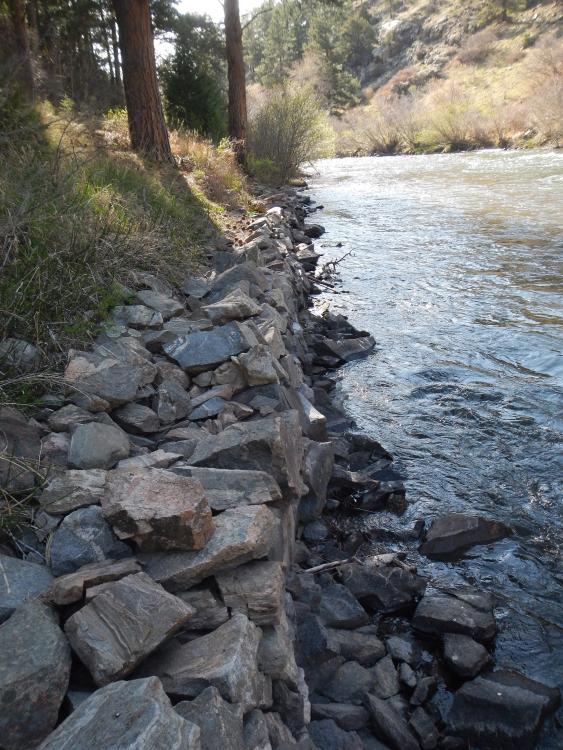 On the D&RG grade 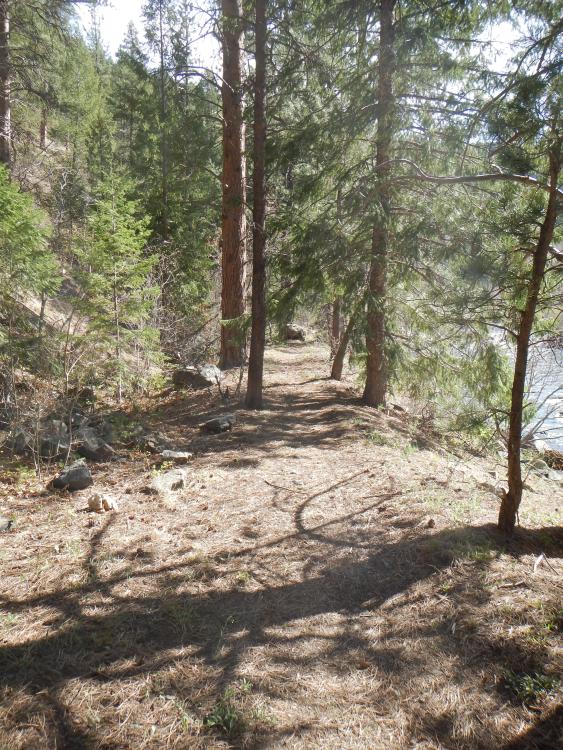 A cut  The South Platte Hotel is still hanging on... 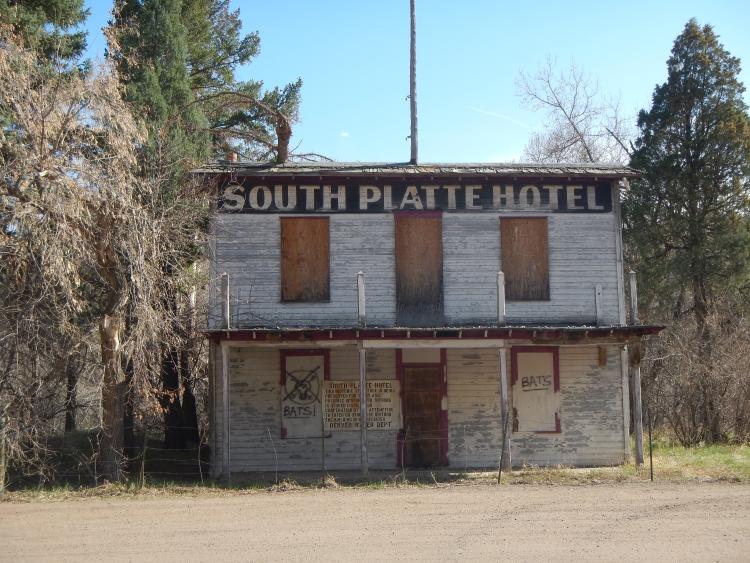 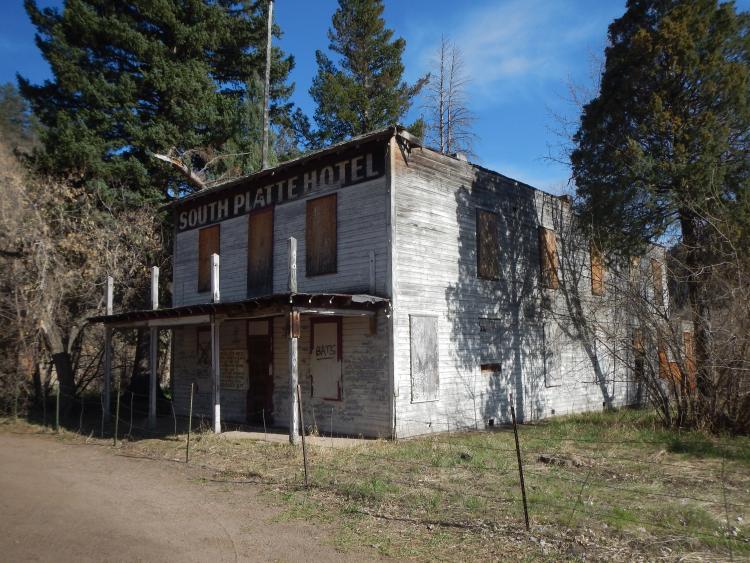 Alex |
|
This post was updated on .
In reply to this post by Chris Walker
D&RG Grading near Deanesbury
■ Returning to my research regarding D&RG grading in Platte Canyon, I thought I would share several views of the D&RG grading near Deanesbury (Gilman's; Strontia Springs). – While the "HAER" series of photos of D&RG rock work is quite good with regard to photographic quality, little or no effort was made to provide actual locations which would have been relatively easy to do by correlating with C&S mileposts. In the days before GPS, latitude and longitude would have been a challenge but still could have been done using a USGS map. Also, dates provided for the HAER photographs are frequently off by several years. - - - – #166 – To update the visual record of D&RG grading, this first image is looking down Deane's "Bear Gulch" logging road with the Deanesbury Hotel (1877) in the foreground. The hotel had been purchased from Cecil Deane in the summer of 1880 by Mr. Ben M. Gilman (1835-1915), a Denver restauranteur who had also been the proprietor since 1879 of the 42-room "Swiss Cottage" in Morrison and is perhaps best known for operating the original hotel/eating house at Como which later burned in 1896 and was replaced the following year. Out of view to the right is Cecil Deane's sawmill and lumber operation located in the bottom of Bear Gulch. Much more on Deanesbury later.  – Of greatest interest for the purposes of this post, the ascending grade of the D&RG can be clearly seen on the opposing hillside as it approached the "Narrows" and the DSP&P "upper iron truss bridge" where through some expensive rock work, a bridge above and tunnel, the D&RG would once again swap sides of the river with the DSP&P below, just as they had proposed at the site of the "lower bridge" near Mill Gulch. The expensive rock work near the "upper bridge" was one of the two significant gaps in D&RG grading, the other being through the sharp ridge line above the Highline Canal tunnel. – Directly in front of Gilman's Hotel was a very crude log bridge leading across the river to Isaac W. Chatfield's grading camp which also included the low stables which can be seen on the other side of the river. Interestingly, Isaac Willard Chatfield (1836-1921) had the grading contract for much of the DSP&P through the canyon and was now using his same camp while grading the 1879 D&RG grade high up on the hillside. D&RG grading ceased for the first time during the summer of 1882. The log bridge also serviced the crude trail up Willow Creek north to the Hutchinson Post Office (1865-1890) which was near current Conifer (old Bradford Jct.). In later years, the log bridge was washed out and replaced many times, mainly to reach the additional Strontia Springs tourist cabins and electric works on the north side of the river. Source: Craig H. Trout Collection, please credit
Craig H. Trout
|
|
This post was updated on .
#275 – In this interesting view, we are looking downgrade from the front porch of the Deanesbury (Gilman's; Strontia Springs) hotel. The ascending grade of the D&RG can be clearly seen on the distant hillside opposite the DSP&P trackage. Not far down the river from the rocky point in the distance is Stevens Gulch.
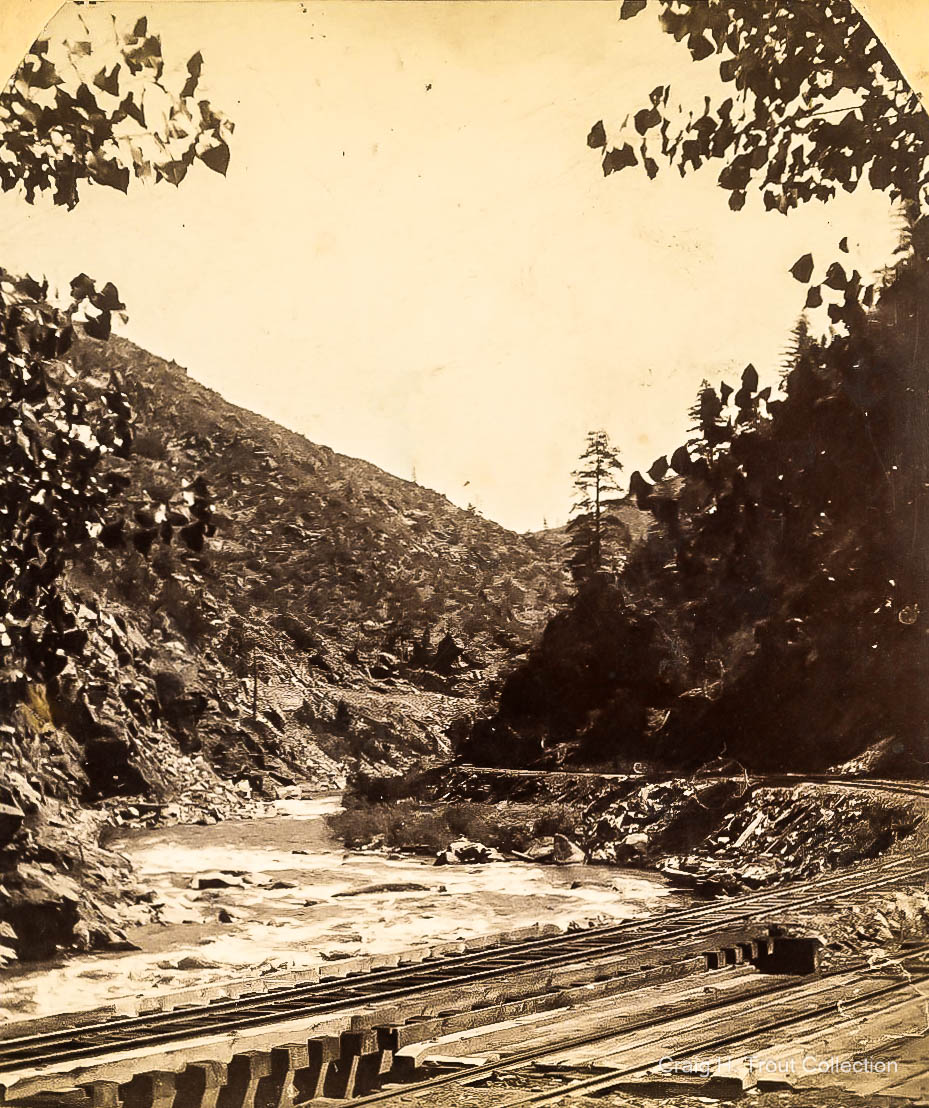 – In the foreground (partially "planked over"), we see Bridge #1047 over "Bear Creek," milepost 26.9. The bridge consisted of (2) 16' spans for a combined total of 48 feet [sic] and being 5' in height. The bridge had originally been built in 1877 but was rebuilt in 1884. The passing track (on the river side) was washed out during the disastrous 3 May 1900 flood and never replaced. Source: Craig H. Trout Collection, please credit
Craig H. Trout
|
|
#630 -- In this view, what "may" be the D&RG grade can be seen as the straight line well up on the far hillside shortly before it stopped above the "upper iron truss bridge."
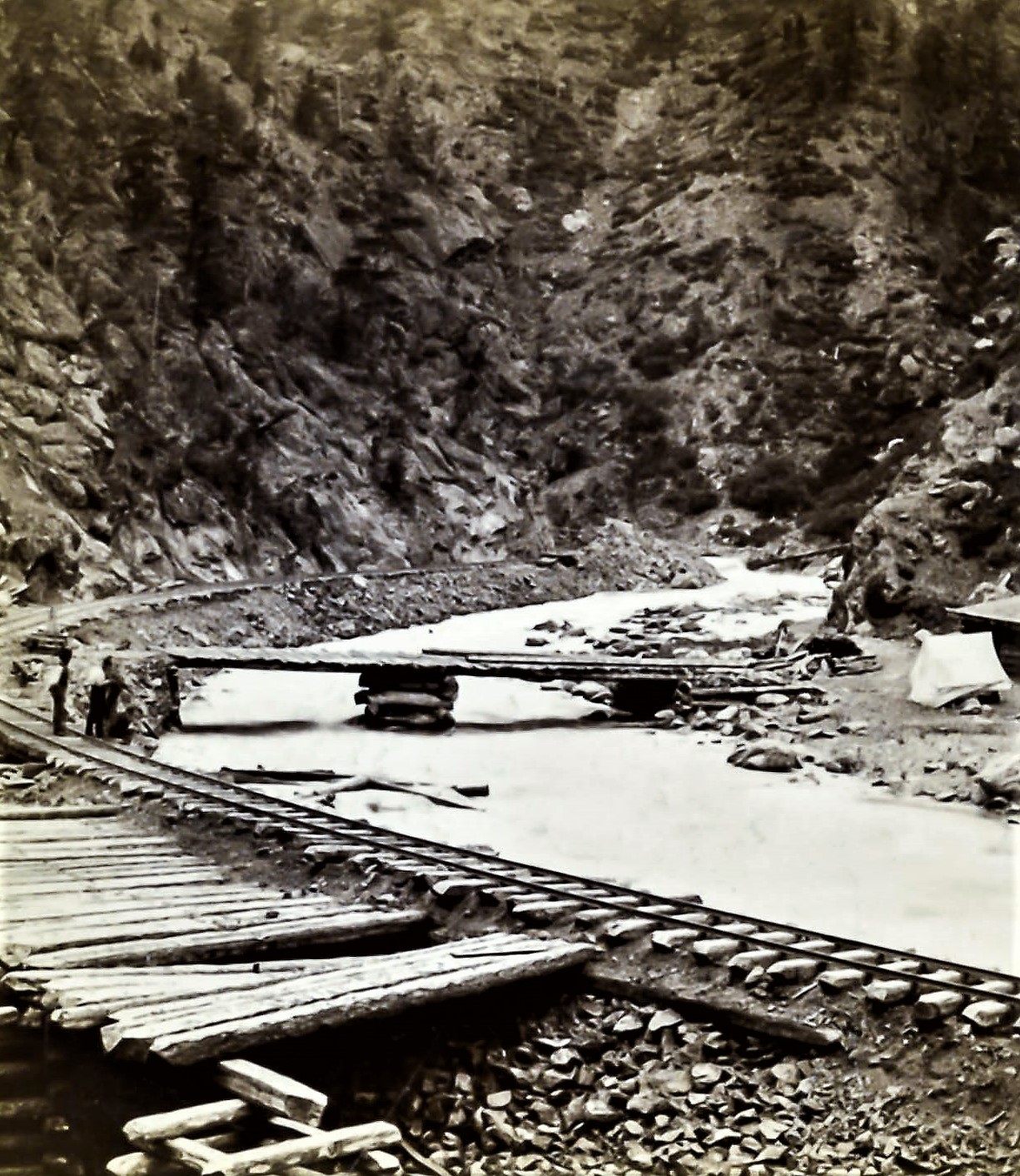 – In the foreground, we see the crude log bridge leading over to Chatfield's grading camp on the right and then eventually up Willow Creek to Hutchinson's Post Office. – Also in the foreground, we see the very raw DSP&P trackage as first built, but was eventually downgraded to a passing siding when an additional track was added in the foreground. Deane had improvised a general loading area by laying a series of logs or poles near the Bear Creek bridge. The "upper iron truss bridge" (#1049) is just around the bend in the distance. – The many interesting details in this view might make for interesting modeling. Source: Craig H. Trout Collection, please credit
Craig H. Trout
|
Re: D&RG Grading Through Platte Canyon...
|
While this does not pertain to grading on any Denver Short Line route
it does have some interesting info, Jimmy          |
|
Hey Jimmy!
Wow, and Double-Wow! What a truly amazing letter, I had never seen much of this information before. When it first mentioned "foothills," I assumed it simply meant "Platte Canyon," but when it later mentioned Turkey Creek, Bergan Park, Beaver Creek, and such, I immediately realized he was considering a rather serpentine route over some very challenging high ground to drop down into Clear Creek and then approach the base of Argentine Pass, then coming down into the St. John's and Montezuma mining district and eventually Dillon along Blue River. I also had never heard of a contemplated "Argentine Tunnel" and the possibility of a temporary cog railroad over the top, as well as cog railroad feeder lines along Clear Creek. Another thing that blew me away was the relatively late date, 1 Oct 1890! As for the author, I'm very familiar with "Jno. H. Morton," he was the locating engineer for several of the branches and spurs along the D&RG First Division, First District, such as Overland Park, the Littleton wye (to turn the Uncle Sam), some of the locating work for the Castle Rock quarries, and if I remember correctly, the Lehigh Branch. I also have several of his pocket-size survey ledgers, which are a prized possession. I am curious as to where you got this truly amazing letter. The late Jack Thode perhaps? He gave me numerous survey maps and correspondence regarding virtually every spur or survey along the First Division, First District. He was profoundly generous, a true gentleman, and I treasured our friendship. Thank you Jimmy for sharing this truly amazing letter, I'm surprised this route was not mentioned (that I could find) in the various editions of the "Construction and Filing Map" records.
Craig H. Trout
|
Re: D&RG Grading Through Platte Canyon...
|
This post was updated on .
No this item did not come from Jack Thode.
Through the years I assembled a fair amount of survey files A lot have maps of the area suerveyed. I have a grouop of very large survey maps, 5 or so, pertaining to Denver Short Line surveys. It;s possbile they are the 1889 maps you referenced. But do not want to commit to that until I see them. At present they are hiding from me. I would guess the reason that Denver Short Line maps do not appear on filing record is due to not being filed. Jimmy |
Re: D&RG Grading Through Platte Canyon...
|
Map from Grizzley Route survey file
Jimmy 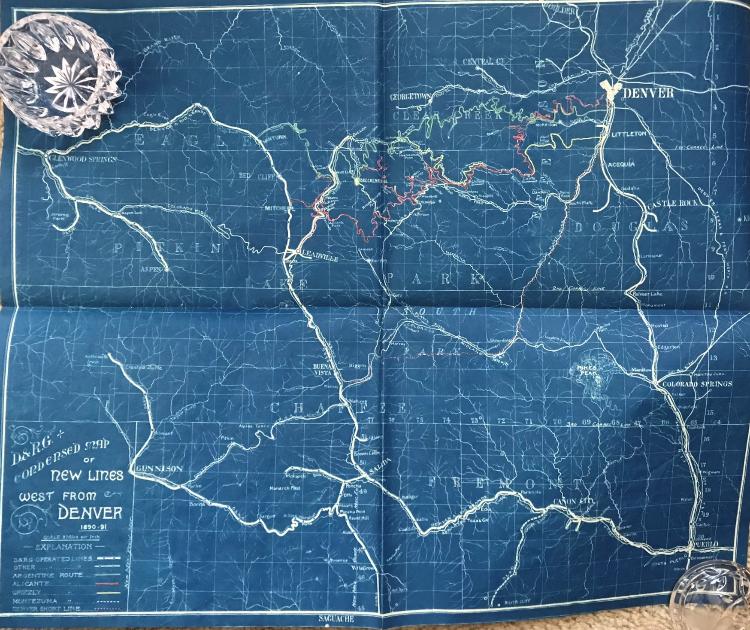  
|
|
Does the "Grizzly Route" survey file include a letter? Unless I missed it, it did not seem to be mentioned in the letter you posted.
Craig H. Trout
|
Re: D&RG Grading Through Platte Canyon...
|
Yes, Grizzly route does have a letter.
I'll see if I can post it soon. Jimmy |
Re: D&RG Grading Through Platte Canyon...
|
Craig and Jimmy,
Thanks so much for posting all the photos, maps and documents. A fascinating read and the early views of Deansbury are great. Makes one fantasize about what might have been.
Jim Courtney
Poulsbo, WA |
Re: D&RG Grading Through Platte Canyon...
|
This post was updated on .
In reply to this post by Jimmy Blouch
Grizzley Route survey
Jimmy 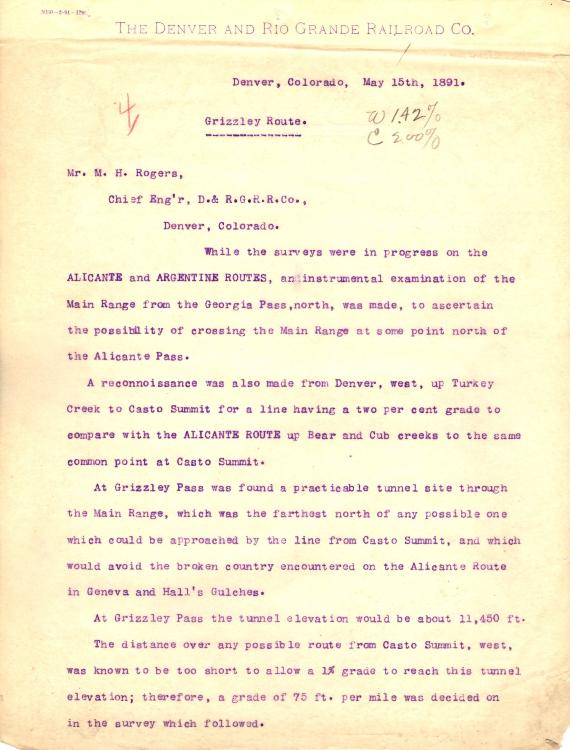 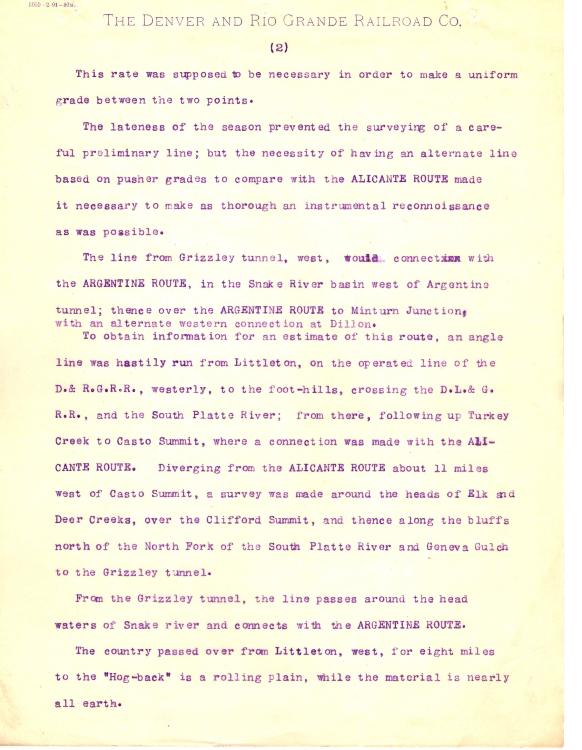 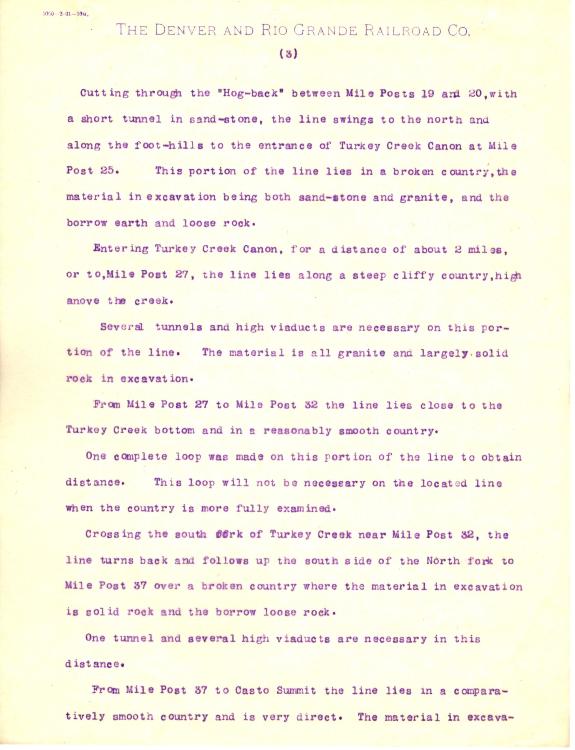 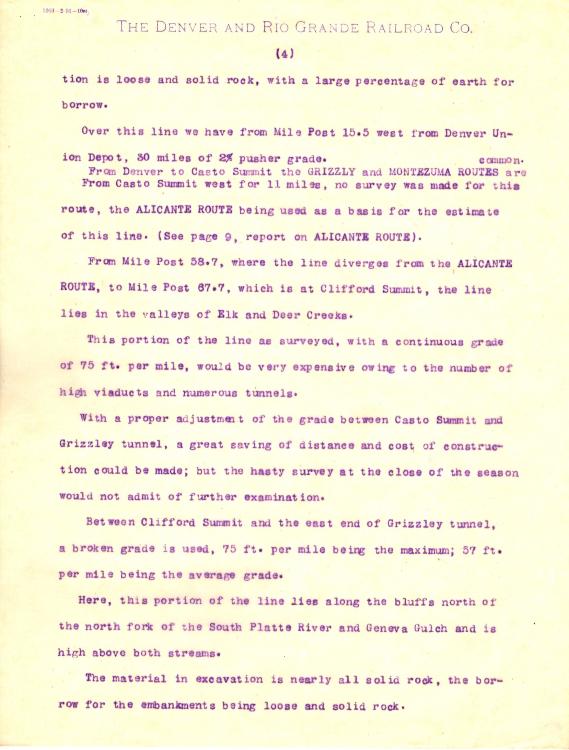 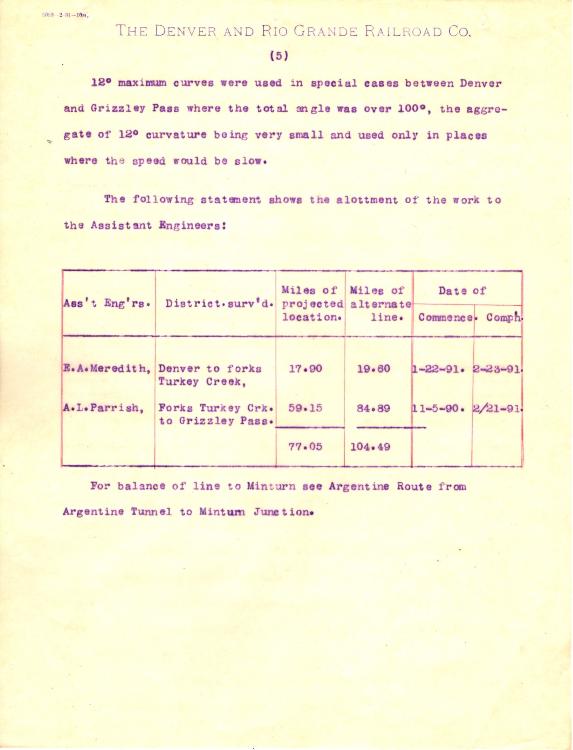 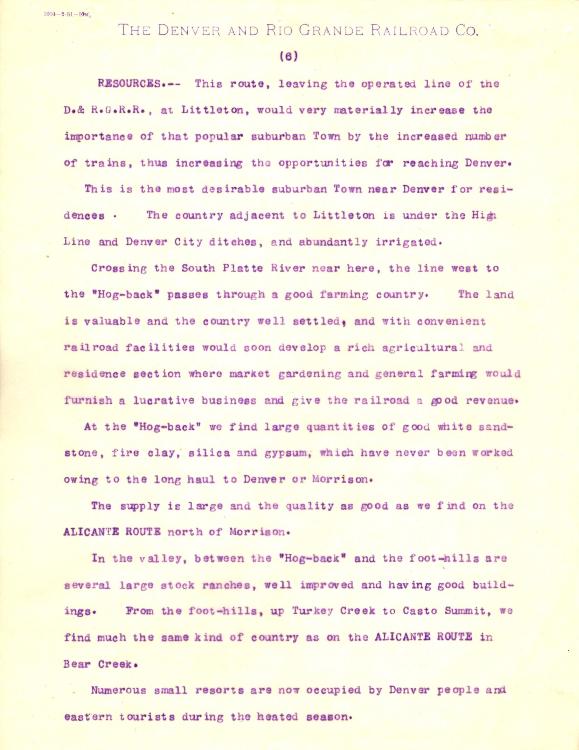 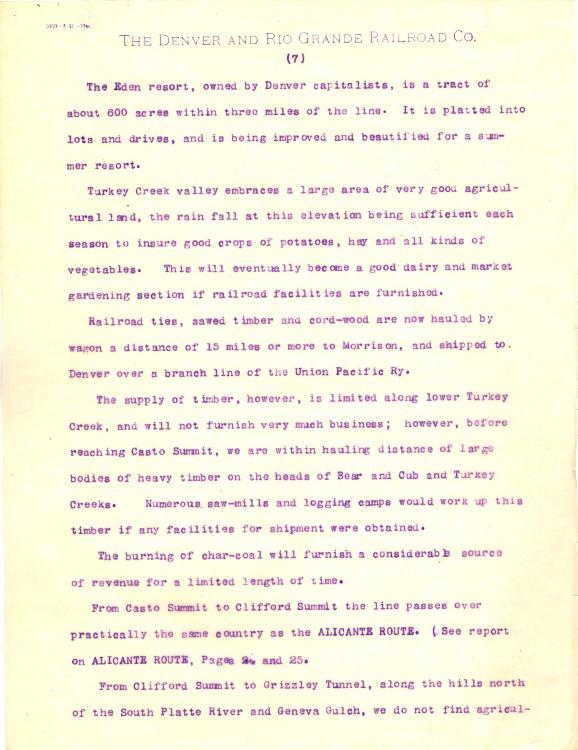  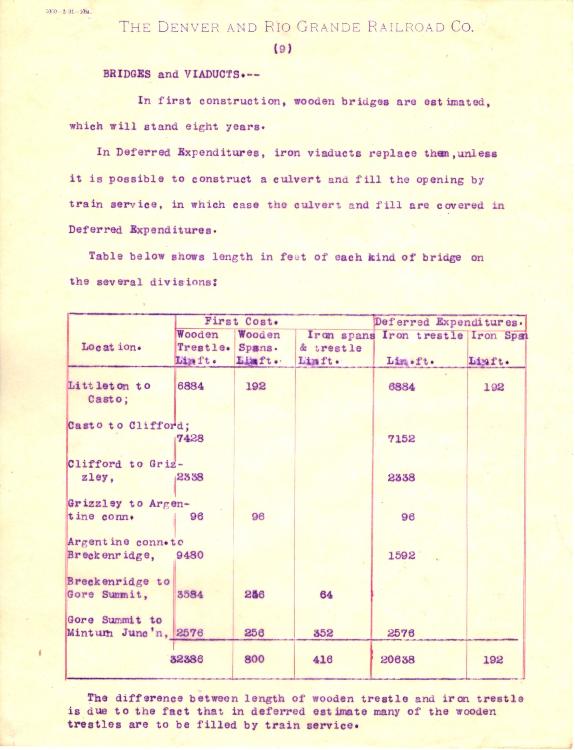 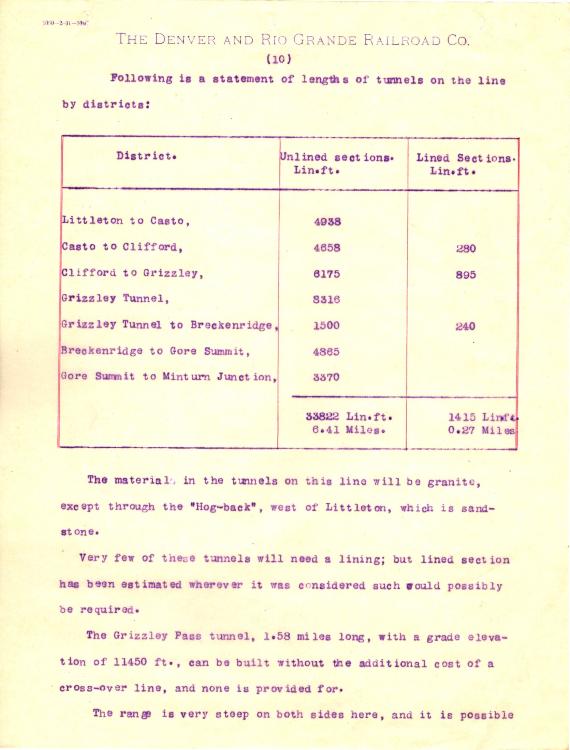   < <
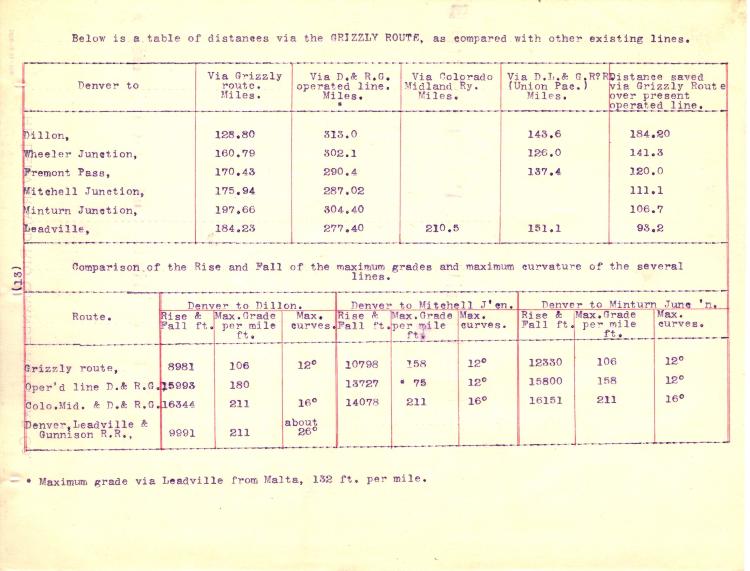  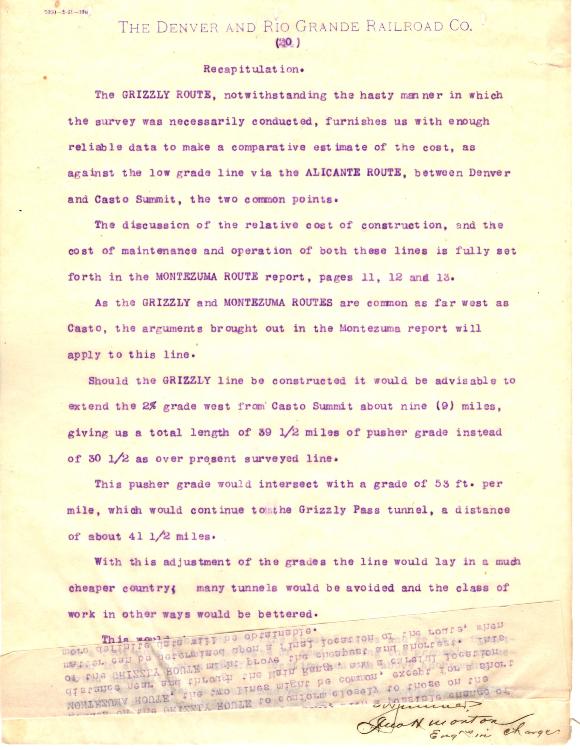
|
|
In reply to this post by Jimmy Blouch
In some respects this 1890 proposal casts a wide net of locations. I do not know the locations of mines or of mines that have more than one name but...... Orphan Boy is a mine west of London Junction, Pennsylvania maybe on Pennsylvania Mountain(active mine today) on a drainage south of London Junction, The Hall Lode is in Hall Valley(served by the DSP&P from Webster). Also the Whale is at the end of Hall Valley(tracks left Webster, went up Hall Valley before the climb to Kenosha). Geneva would be up the valley from Grant. So it sounds like every mine in the area is included.
One can make a great listing of rail proposals at the west end of the Clear Creek Valley and the east end of the Snake River. Tom Klinger |
«
Return to C&Sng Discussion Forum
|
1 view|%1 views
| Free forum by Nabble | Edit this page |

